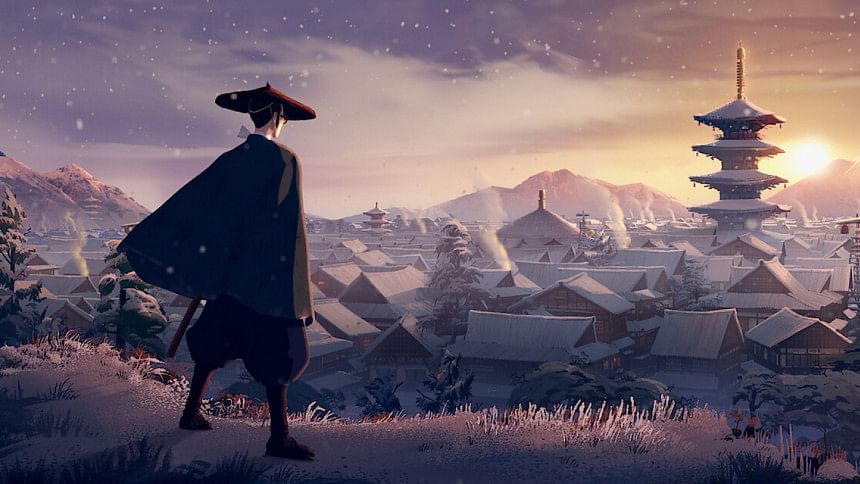Blue Eye Samurai: A visually stunning portrayal of a samurai’s vengeance

The story takes place in the Edo period in Japan, when the country had implemented its isolationist policy, also known as Sakoku. During this period, Japan's borders were closed to all forms of trade and migration with foreign powers, with the exception of the Dutch and Chinese. Consequently, people born from interracial relations during that period were rare, and even considered "impure" due to the sentiments of the isolationist policies.
This is the burden that the titular blue-eyed samurai, Mizu, has to bear. Mizu, a female warrior (or onna-musha) born from a Japanese mother and a white father, is regarded as an onryō – a spirit of great wrath – throughout the series, partly due to her mixed race and in part due to her all-consuming thirst for vengeance. The series begins with Mizu's quest to hunt down the only four white men in Japan to find her biological father and seek vengeance for the terrible fate he has inflicted on her by giving her the "impurity" of having a mixed heritage, resulting in a life full of isolation and prejudice.
The character roster of Blue Eye Samurai features very common archetypes – the blood-thirsty protagonist Mizu, the dishonoured warrior Teigen, the rebellious princess Akemi, and the sidekick providing comic relief as well as exemplifying the deus ex machina plot device Ringo. Similarly, the story itself is nothing extraordinary, oftentimes being predictable, which isn't necessarily a bad thing. However, what Blue Eye Samurai excels at is elevating these common archetypes and plotlines with high levels of finesse.
Mizu is probably one of the most compelling protagonists I've seen in recent years, animated or otherwise. She not only has to bear the burden of being mixed race, but she also has to face the struggle of being a woman in a world dominated by men by pretending to be a male samurai. The show does a great job of handling her character, showcasing her strength without sweeping her humaneness and femininity under the rug. While she may be treated as a beast of vengeance at times, she is still grounded by her wishes and desires of gaining a sense of normalcy and softness in her otherwise brutal and unforgiving life, as well as her willingness to learn from her mistakes.
To begin with, the animation of the show grapples with the fine line between 2D and 3D, resulting in stunning visuals oozing with style. This results in some of the most memorable fight sequences in animation, coupled with a fantastic soundtrack, making every episode highly thrilling to watch. The show even manages to throw in a few Easter eggs as an homage to famous samurai movies, such as using the song "Battle Without Honor or Humanity" by Tomoyasu Hotei as a reference to Kill Bill or showing the infamous blood splatter from Akira Kurosawa's Sanjuro.
From a historical context, Blue Eye Samurai does take some creative liberties, without diminishing the political, social, and economical complexities of the Edo period. Having said that, the show definitely doesn't shy away from being graphic, but also manages to refrain from gratuitous content.
Overall, the show doesn't really offer something truly out of the box, but it still offers a thoroughly entertaining experience by expertly fleshing out its story despite its confines and limitations.

 For all latest news, follow The Daily Star's Google News channel.
For all latest news, follow The Daily Star's Google News channel. 








Comments